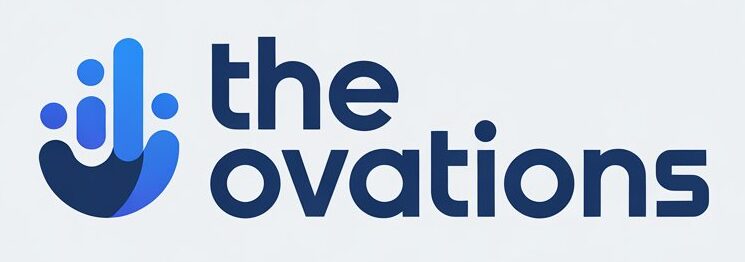There’s a magnetic rhythm to her voice—warm, inquisitive, unflinchingly real. You hear it before sunrise in St. Louis, on ESPN Radio, cutting through the groggy haze of pre-dawn with a comforting cadence that could just as easily belong to a lifelong friend as it could to a top-tier broadcaster. Michelle Smallmon Age has become more than just a familiar voice on the airwaves. She’s evolved into a quiet force in American sports media—a woman carving out space in a landscape that often leaves little room for nuanced perspectives.
But with growing curiosity surrounding her personal life, one question echoes through fan forums, Google searches, and podcast comment sections alike: What is Michelle Smallmon’s age?
Let’s get into it. Not just the numbers, but the layers behind them.
The Quick Answer: Michelle Smallmon Age
To satisfy the algorithm gods and answer the headline directly: Michelle Smallmon was born on August 13, 1986. That puts her current age at 38 years old as of 2025.
But if you’re here just for the number, you’re missing the real story.
Because with Michelle Smallmon, the question of age isn’t just about digits—it’s about decades of hustle, identity, and a woman redefining what it means to have a “radio voice” in a rapidly changing media world.
From Belleville to Big Time: A Midwestern Start
Michelle Smallmon’s story begins in Belleville, Illinois, a city that hugs the border of Missouri and feeds into the cultural bloodstream of St. Louis. Raised in the heart of the Midwest, Smallmon exudes that particular brand of humble intensity characteristic of people from the region: fiercely loyal, deeply rooted, and forever curious.
Belleville isn’t Hollywood. It’s not even Chicago. It’s where grit is taught over glam, where success is measured in effort before accolades. This ethos infused Michelle’s early years with a kind of work ethic that would later become her calling card.
She attended the University of Illinois, majoring in broadcast journalism—a choice that, in hindsight, seems inevitable. From a young age, she had the intonation of a storyteller and the observational skillset of a natural analyst. Pair that with an innate charisma and a heart that beats for sports? You get a broadcasting cocktail uniquely her own.
Climbing the ESPN Ladder—With Sneakers On
After earning her degree, Smallmon landed an internship with 101 ESPN, the St. Louis-based affiliate of the worldwide leader in sports. But this wasn’t your typical “fetch coffee and fade into the background” gig. She dove headfirst into the trenches—production rooms, editing suites, research tasks, and yes, eventually, the mic.
Michelle’s age at this time—her early 20s—was a defining period. She wasn’t just building a resume; she was forming a radio identity. And perhaps even more significantly, she was doing it in a male-dominated environment, one where female voices were often relegated to sideline commentary or novelty slots.
But Smallmon was different. She brought more than just a woman’s voice to the table—she brought perspective. Depth. Range. A fan’s heart and a critic’s brain.
Soon enough, she became a producer for the popular “The Fast Lane” and later worked on other marquee shows like “Karraker & Smallmon.” Her rapport with co-host Randy Karraker helped build one of St. Louis radio’s most beloved sports programs, giving her both local cachet and national attention.
The Move to ESPN New York—and Back Again
For a stretch, Michelle Smallmon took her talents to New York City, working with ESPN’s national radio operation. This was a bold move—not just geographically, but professionally.
New York is where the radio game shifts into fifth gear. It’s louder, faster, more competitive. But it was also the ideal stage for Michelle to stretch her wings. She contributed to national shows, mingled with media elites, and refined her ability to speak to audiences beyond the Midwest.
Still, St. Louis pulled her back. It wasn’t a retreat—it was a reset. In returning to her roots, Smallmon doubled down on authenticity. Her age, at that point in her early 30s, became an asset. She wasn’t the wide-eyed newcomer anymore. She was seasoned. Still hungry, but battle-tested.
Michelle Smallmon Age and the Unspoken Standards in Media
Let’s pause for a moment and ask: Why does Michelle Smallmon’s age matter so much to people?
In a media landscape obsessed with youth, the fascination with age—particularly for women—isn’t always benign. There’s a double standard that lingers like static: where men in their 40s and 50s are seen as “veterans,” women at the same age are often unfairly judged by outdated benchmarks of “marketability.”
But Michelle subverts that narrative. Her 30s have arguably been her most productive, most visible, and most confident years. She hasn’t leaned into age denial or overcorrected for relevance. Instead, she owns her evolution. You can hear it in her voice—calmer now, more assured, less concerned with industry noise.
She talks sports, yes. But she also talks about sports culture—identity, ethics, equity, and empathy. These are not the topics of someone trying to stay young. These are the observations of someone who’s lived enough to see the layers beneath the surface.
A Modern Voice with Old-School Heart
In an era of TikTok analysts, hot-take merchants, and debate-for-clicks sports media, Michelle Smallmon offers something rare: earnestness.
There’s a level of integrity to her broadcast presence. She doesn’t yell. She doesn’t pander. She doesn’t chase headlines for virality’s sake. And yet, she remains sharply relevant, particularly to the demographic often ignored in sports talk—women who love sports deeply but don’t see themselves reflected in the noise.
Her fanbase spans generations. College kids who caught her podcasts during quarantine. St. Louis dads who’ve listened since “The Fast Lane” days. Women in their 40s and 50s who are just grateful to hear someone like them on the air.
Podcasting, Perspective, and the Next Evolution
In addition to radio, Smallmon has taken on the podcast world with the same mix of insight and warmth. Her appearances on ESPN Radio’s national programming and podcasts like “Small Talk” and “Unsportsmanlike” showcase a woman in command of her narrative, unafraid to dig deeper.
These podcasts aren’t just sports breakdowns—they’re cultural conversations with a side of stats. Michelle invites listeners not only to hear what’s happening on the field but to think about what it all means off the field.
And again, this is where Michelle Smallmon’s age becomes an advantage. At 38, she’s lived enough to draw from real-world context. She isn’t theorizing womanhood, work, and identity—she’s living it. Navigating it. Owning it.
Representation Matters—And So Does Evolution
Michelle Smallmon isn’t just a broadcaster. She’s become a touchstone—a woman who’s walked the tightrope of sports media and emerged not only balanced, but with a sense of direction.
Her age—often searched, frequently asked about—is less a curiosity and more a credential. It means she’s seen things shift. She’s adapted. She’s grown, not just older but wiser, sharper, more attuned to her audience.
And make no mistake—she does have an audience. A loyal one. One that follows her not because she fits a stereotype, but because she breaks it with style.
The Woman Behind the Mic
Off-air, Michelle Smallmon is known for her love of St. Louis sports (especially the Cardinals), her borderline-obsessive taste in true crime and pop culture podcasts, and her commitment to authenticity. She’s posted openly about navigating challenges, loss, and change—all with a transparency that resonates.
She’s also a fierce advocate for women in media, often mentoring younger broadcasters and speaking on panels about gender equity in journalism and sports coverage. And in an industry often afraid to be vulnerable, Smallmon uses her platform to normalize humanity—on and off the mic.
What Comes Next?
At 38, Michelle Smallmon is far from finished. She’s entering what many consider a broadcaster’s prime: the age where experience meets poise. The age where audience trust becomes an unshakable currency. The age where legacy-building begins.
Expect to see her name on bigger podcasts. Expect crossover into sports documentaries, maybe even authoring her own book. Expect her influence to grow—not just in audio, but in shaping the conversations that happen around sports, gender, identity, and culture.
And perhaps most importantly: expect her to remain real. Because that’s always been her most powerful asset.
Final Word: Michelle Smallmon Age Isn’t the Point—But It’s the Proof
So yes, Michelle Smallmon is 38 years old. But what she’s done in those years is far more interesting than the number itself.
She’s built a career without cutting corners. She’s crafted a voice that resonates beyond radio. She’s become a symbol of what’s possible for women in sports media—at any age.
In a world addicted to youth and novelty, Michelle Smallmon proves that consistency, clarity, and character still matter.
And that’s a story worth listening to—no matter what the clock says.






